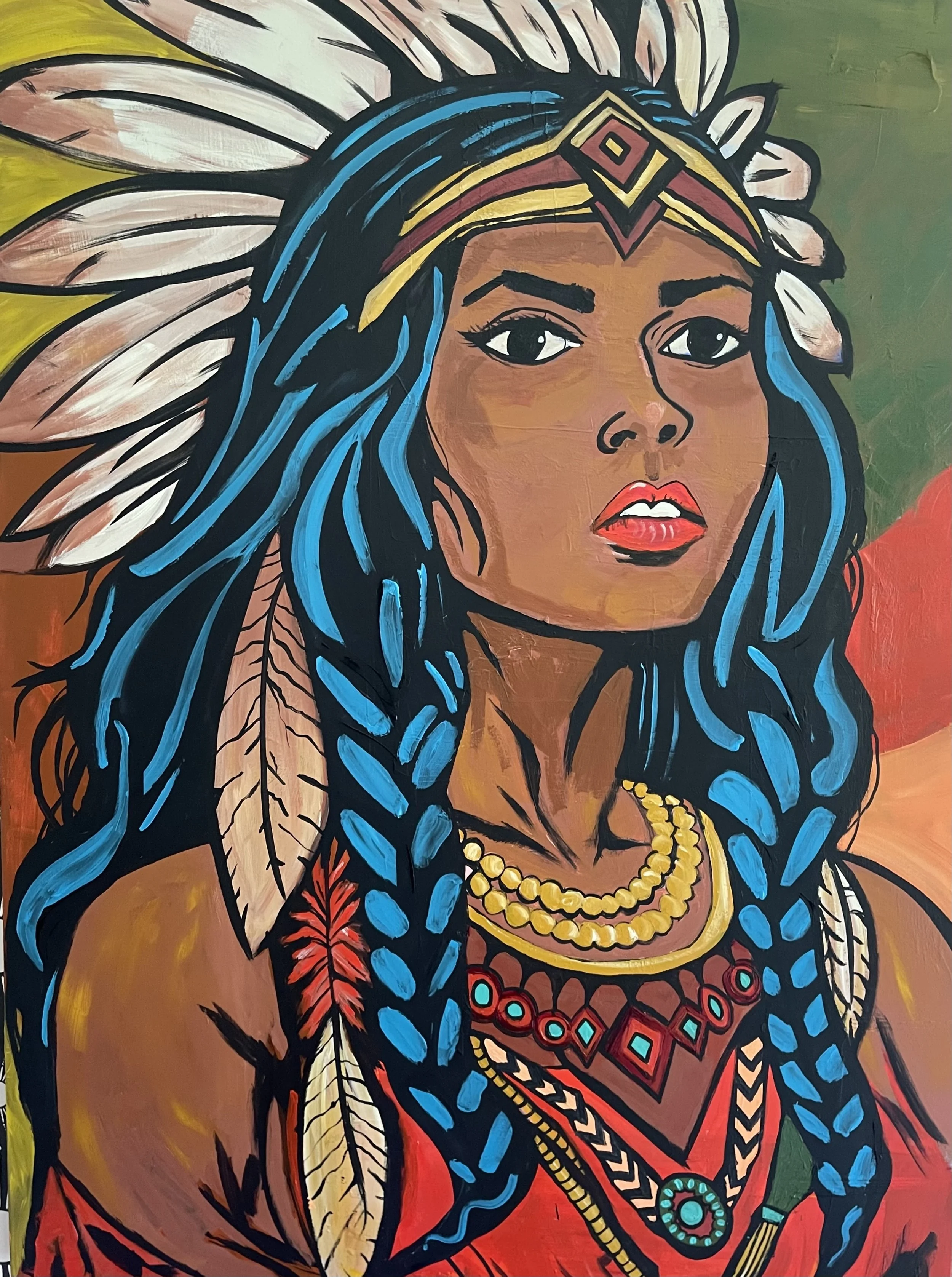 Image 1 of 1
Image 1 of 1


Falling for the Ozarks
Acrylic on Canvas
36×48
Before white settlement, the lush hills and forests of what is now Springfield, Missouri, were the ancestral homeland of several Native American tribes…most notably the Osage, Delaware, Kickapoo, and Missouria. These nations lived in harmony with the changing seasons, harvesting, celebrating, and passing down stories around the rhythms of the fall landscape.
In 1830, the Trail of Tears forced many of these groups from their homes, routes of suffering and displacement that cut through our region. Today, echoes of that history remain; but there’s also resilience and intrinsic connections to this land that demand recognition.
I titled this painting “What Fall in the Ozarks Was” to honor both the landscape and the peoples who once lived in deep reverence of seasonal changes. The headdress woven into the figure’s hair is a creative choice, not meant to replicate traditional dress, but rather to symbolize leadership, strength, and sacred connection to the land and its cycles. It’s a nod to the power these women held in their communities, even if such imagery strays from historical accuracy.
The graphic, comic-book style of the work is intentional. By echoing the bold lines and flat colors of vintage comics, the piece draws on a medium often used to simplify stories for mass audiences. Here, that same visual language is reimagined to elevate a story that is anything but simple, linking contemporary art to storytelling traditions and ensuring that resilience, strength, and cultural memory remain vivid and accessible.
Acrylic on Canvas
36×48
Before white settlement, the lush hills and forests of what is now Springfield, Missouri, were the ancestral homeland of several Native American tribes…most notably the Osage, Delaware, Kickapoo, and Missouria. These nations lived in harmony with the changing seasons, harvesting, celebrating, and passing down stories around the rhythms of the fall landscape.
In 1830, the Trail of Tears forced many of these groups from their homes, routes of suffering and displacement that cut through our region. Today, echoes of that history remain; but there’s also resilience and intrinsic connections to this land that demand recognition.
I titled this painting “What Fall in the Ozarks Was” to honor both the landscape and the peoples who once lived in deep reverence of seasonal changes. The headdress woven into the figure’s hair is a creative choice, not meant to replicate traditional dress, but rather to symbolize leadership, strength, and sacred connection to the land and its cycles. It’s a nod to the power these women held in their communities, even if such imagery strays from historical accuracy.
The graphic, comic-book style of the work is intentional. By echoing the bold lines and flat colors of vintage comics, the piece draws on a medium often used to simplify stories for mass audiences. Here, that same visual language is reimagined to elevate a story that is anything but simple, linking contemporary art to storytelling traditions and ensuring that resilience, strength, and cultural memory remain vivid and accessible.

